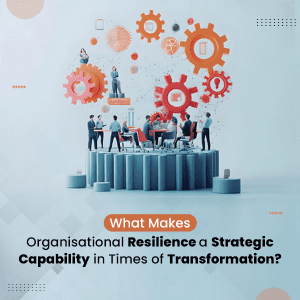
The field of change management can often seem complex and challenging to navigate, whether you’re a newcomer or an experienced professional. It draws from various disciplines, including engineering, business, and psychology. As organisations increasingly need to adapt and evolve, change management prosci has expanded to integrate a broader set of skills and knowledge from these areas.
While this growth has strengthened discipline overall, it has also led to uncertainty among change leaders about its true scope and purpose. This guide aims to demystify the origins and evolution of change management and shed light on why it has emerged as an essential leadership competency in today’s dynamic business environment.
History and Evolution of Change Management
To understand modern change management, it is essential to explore two foundational schools of thought: the engineer’s focus on improving business performance and the psychologist’s emphasis on managing the human aspects of change.
The engineering perspective traces back to the late 19th century when pioneers like Frederick Taylor studied how to optimise business operations by treating them as mechanical systems. This approach prioritises tangible, measurable elements such as business strategies, processes, systems, organisational structures, and job roles—all of which can be adjusted to improve overall performance.
On the other hand, psychology provides insights into how individuals respond to change. Psychologists have long examined human behaviour and reactions in various situations, including those involving significant transitions. William Bridges’ 1980 book, Transitions, marked a key moment in the study of human adaptation to change, offering a framework for understanding how individuals experience and process transitions. While his initial work focused more broadly on personal change, his later writings connected these concepts to workplace change, establishing a foundation for managing the human side of organisational transformation.
Over time, these two distinct schools of thought have converged, creating a holistic approach to change management. This evolution bridges the technical and human elements of change, providing a comprehensive framework that balances process optimization with human adaptability.
Business professionals observing real-world organisational changes have recognized that relying solely on one of the two foundational approaches—engineering or psychology—often leads to ineffective results. A purely “engineering” approach may deliver technically sound solutions, but these solutions frequently fail to be implemented successfully. Conversely, a strictly “psychological” approach may foster openness to change without adequately addressing the structural and operational shifts necessary for success.
So, what does this mean for the field of change management? First, successful change requires balancing both the technical and human aspects. Second, any methodology aimed at business improvement must integrate these two perspectives into a cohesive model. Lastly, when engaging with change management literature, it is crucial to understand how the term is being used to ensure its relevance and applicability to your needs.
The Modern Definition
Today, the term “change management” can carry various interpretations, but one of the most effective and actionable definitions is:
Change management involves the processes, tools, and techniques used to manage the people-side of change, ensuring that business goals are met and the desired outcomes are achieved within the social framework of the organisation.
This definition highlights that change management is distinct from broader business improvement strategies. Instead, it acts as a complementary discipline that integrates seamlessly with methods like Six Sigma, BPR, or TQM. By overlaying prosci change management with these techniques, organisations can address the human factors that drive sustainable success.
Evidence That Change Management Is the New Leadership Competency
The importance of prosci change management has solidified its place as an essential leadership skill for modern organizations. Here are five key reasons why change management has become a core leadership competency:
1. People Are Central to Every Change
Projects and initiatives often encounter obstacles when addressing the human aspect of change. While technical solutions can be precise, it’s the people who determine whether those solutions are implemented effectively. Prosci change management is not about superficial gestures or vague ideas; it’s a structured, action-oriented approach to engaging people as critical drivers of successful transformation.
2. Project Success Hinges on Change Management
Global organizations have excelled at identifying optimal business solutions. However, research shows that teams consistently identify a lack of effective change management as a key reason for project failures. Resistance to change and a lack of understanding about its necessity often derail projects. Addressing the people side of change is essential to achieving new business goals, making change management a pivotal factor for ensuring project success.
3. Change Is Now Business as Usual
In today’s fast-moving business landscape, change is no longer an occasional disruption—it is a constant. Factors such as shifting markets, empowered employees, and technological innovation have made adaptability a prerequisite for survival. Organisations must embrace flexibility and ensure every project addresses the human side of change, enabling them to thrive amid ongoing transformations.
4. Shifting Organisational Values Demand Change Skills
Over the past few decades, workplace dynamics have shifted dramatically. Traditional values of predictability and control have given way to accountability, responsibility, and empowerment. With employees empowered to make decisions and drive innovation, leaders at every level must develop strong change management skills to guide their teams through transitions effectively.
5. Measuring Change Management’s Impact
Businesses increasingly seek to quantify the effectiveness of prosci change management. By tracking metrics and benchmarking its impact on organizational performance, companies not only validate the importance of change management but also demonstrate its value as an integral part of daily operations. This focus on data-driven insights underscores its necessity in achieving sustainable success.
Marg’s Perspective: Building Change Leaders with Prosci
At Marg Business Transformation, India’s exclusive Prosci affiliate, we partner with organizations to embed prosci change management practices as a core capability. Through change management certification prosci programs, we help leaders master the tools, methodologies, and frameworks needed to guide their teams through transitions with confidence.
Our approach combines Prosci’s globally recognized research with Marg’s hands-on expertise in delivering transformation across industries. The result? Leaders who not only manage change but inspire it.
Conclusion
Successful transformations require more than technical expertise – they demand leaders who can balance business systems with human adaptability. Change management prosci provides the framework to achieve this balance, and through change management certification prosci, professionals can build the leadership skills needed for long-term success.
At Marg, we believe change is not a disruption but an opportunity. By investing in prosci change management, organisations can cultivate leaders who thrive in uncertainty and drive lasting impact. Ready to start your journey? Connect with us today.






